 "dontbethatguy" (dontbethatguy2)
"dontbethatguy" (dontbethatguy2)
01/08/2015 at 01:29 • Filed to: None
 0
0
 2
2
 "dontbethatguy" (dontbethatguy2)
"dontbethatguy" (dontbethatguy2)
01/08/2015 at 01:29 • Filed to: None |  0 0
|  2 2 |
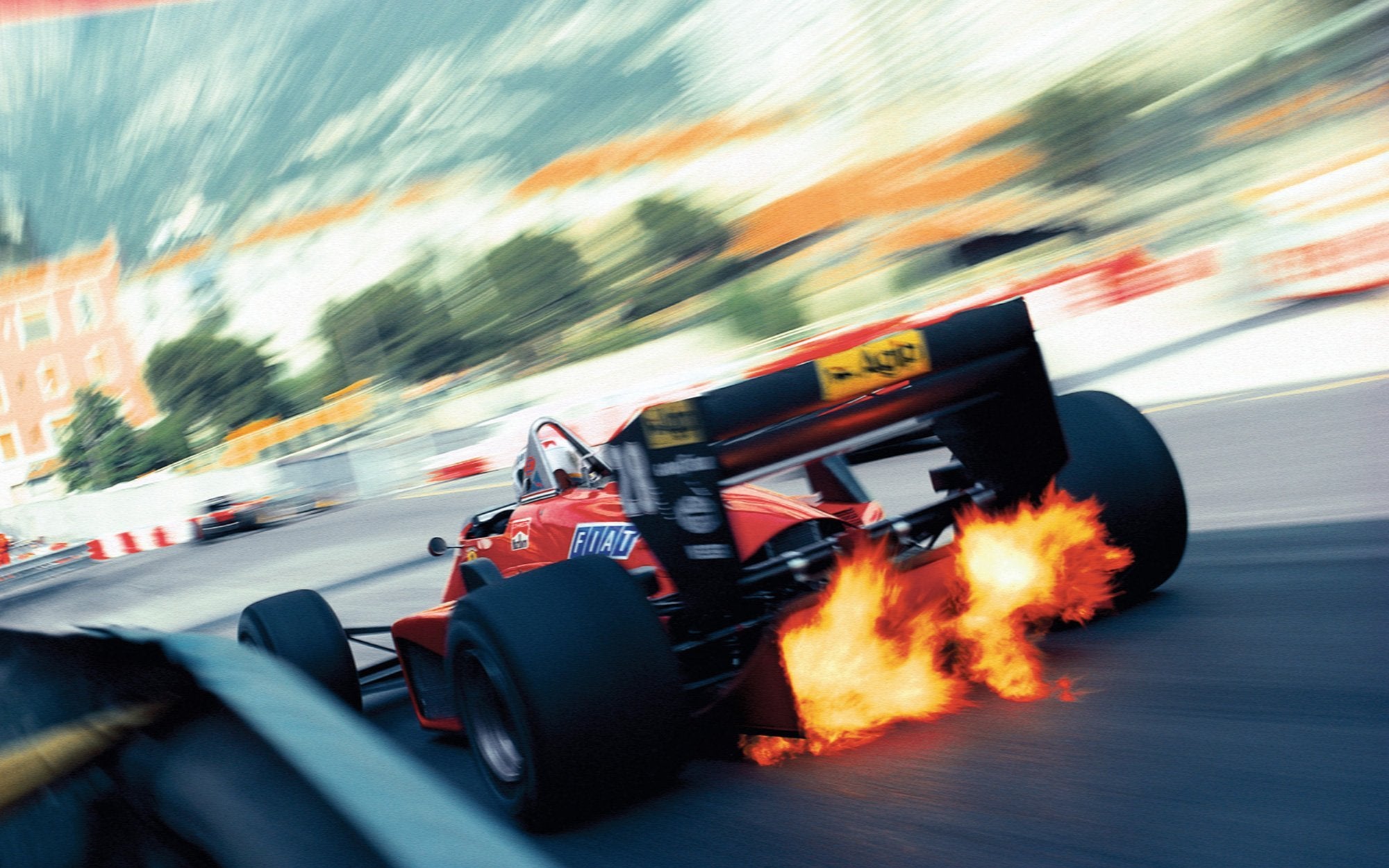
Background
As part of the undergraduate engineering program at Michigan, every engineering student is required to take classes outside of the College of Engineering. This is done to help create engineers who are more well rounded than they would be if they stuck strictly to engineering classes. In order to meet part of these requirements, I found myself in a class entitled "Italian Design". In the course description, there was a brief mention that part of the subject matter to be covered would be Ferrari, Lamborghini, and Pagani. Instead it focused mainly on Versace, Dolce & Gabbana, and Gucci. Great stuff. Turns out I was the only engineer in the class and the only one that was (presumably) lost every day. This class had no tests, no quizzes, and no exams, rather, the final grade was based upon a final paper (min. 5 pages) written on an Italian brand. It would have to cover the brand's history, style, and marketing. It was very hard to not turn this paper into a technical exercise, therefore it ended up seeming rather watered down.
The finished product ended up being 9 pages with a 5 page bibliography. The bold numbers indicate footnotes. However, for length's sake i did not include the bibliography. I wrote it in 6 hours (thank you finals week) so I apologize for any slight grammatical errors there might be. If i had my way (or the time and motivation) it would be closer to 20 pages and a lot more technical. No matter. I now present my final paper. Enjoy.
Ferrari S.p.A
The story of Ferrari begins not how one would expect from a world-renowned automaker. See, Ferrari didn't begin life as an automobile manufacturer. They began as a racing team in 1929 racing under the Alfa Romeo nameplate. 1 If you made a list of every major automobile manufacturer in the world you would find Ferrari unique in this regard. It wasn't until 1947 that Ferrari the automobile manufacturer as we know it was founded and began producing road cars. 2 However, this did not in any way cause Ferrari to stray from the racing heritage the brand had accrued from many years of racing in Formula One and in sportscars. The goal of this paper is to evaluate the ways Ferrari has used its extensive experience racing in the design of its road cars as well as to evaluate the quintessential elements that make Ferrari a uniquely Italian entity.
History
In order to properly craft an educated account of the history of Ferrari one must start with the man himself. Enzo Anselmo Ferrari was born on February 18, 1898 in Modena, Italy. 3 His father owned a small metal engineering company which exposed Enzo at a young age to machines and engineering practices. His first experience with racing cars, however, did not occur until 1908 when, at the age of 10, his father took him to his first race at the Via Emilia circuit in Bologna.4 It was this race that would serve as a spark that ignited Enzo to eventually founding the most successful racing team of all time.
In 1919, after World War I, Enzo moved to Milan to work for Costruzioni Meccaniche Nazionali (CMN) first as a test driver and later as a racing driver. 5 He would make his debut in the 1919 edition of the Poggio di Berceto hill climb and finished fourth in the three-litre category. After several more races with mixed success, Enzo signed with Alfa Romeo, which would be the beginning of a 20 year long association with the brand. He continued racing for Alfa Romeo, winning the 2nd Circuito de Modena in 1928. In 1929 Ferrari founded Scuderia Ferrari in Modena.
The main goal of Scuderia Ferrari was to allow owner-drivers to race. 6 They fielded both cars and motorcycles, although later on would focus exclusively on cars. In 1931 Enzo completed his last race as a driver and finished second at the Circuito Tre Province. which was influenced by the impending birth of his son Dino. Just two years later, Scuderia Ferrari became the official racing division of Alfa Romeo. They would stay as Alfa Romeo's racing program until 1939, when Enzo decides to leave Alfa and build his own cars. The terms of his departure forbade him from use the Ferrari name in association with races or race cars for at least four years. On September 13, 1939, Enzo founded Auto Avio Costruzioni in Modena and the Ferrari automobile building era began. 7 At the height of WWII Ferrari moved his company to Maranello, where the factory still exists to this day and in 1947 the first car designed and built by Ferrari, the 125 S debuted.
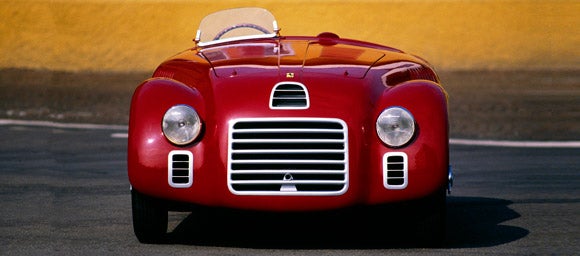
The Ferrari 125 S was the very first car to wear the Ferrari badge, featuring a black Prancing Horse on a yellow background with the colors of the Italian flag adorning the top. It was propelled by a V12 engine which set the precedent for future Ferrari Grand Touring (or GT) cars to follow. 8 This choice to have a car powered by an expensive, complex engine that took a lot of resources to conceptualize, design, and build in a postwar economy that was suffering tremendous hardship is an interesting one and the answer to the question "why" can be best answered by The Man himself. In his autobiography, he admits that he "... was greatly impressed by the Delange Grand Prix models, and the V12 Packards… and the inimitable 12-cylinder song had left its imprint on him." 9 Many people thought Ferrari's choice to include V12 engines instead of simpler V8's was "audacious, presumptuous, and even disastrous." 10 This did not deter Ferrari and thus the legend was born. To this day Ferrari is known for its engines, the thunderous V12's especially, and Ferrari has an entire complex within their factory grounds devoted solely to the casting, machining, and production of these very special engines. 11 The Tipo 125 S was a successful racer, winning 6 of the 13 races in which it participated. This success resulted in the money flowing into Maranello, allowing Ferrari to start building newer, better cars.
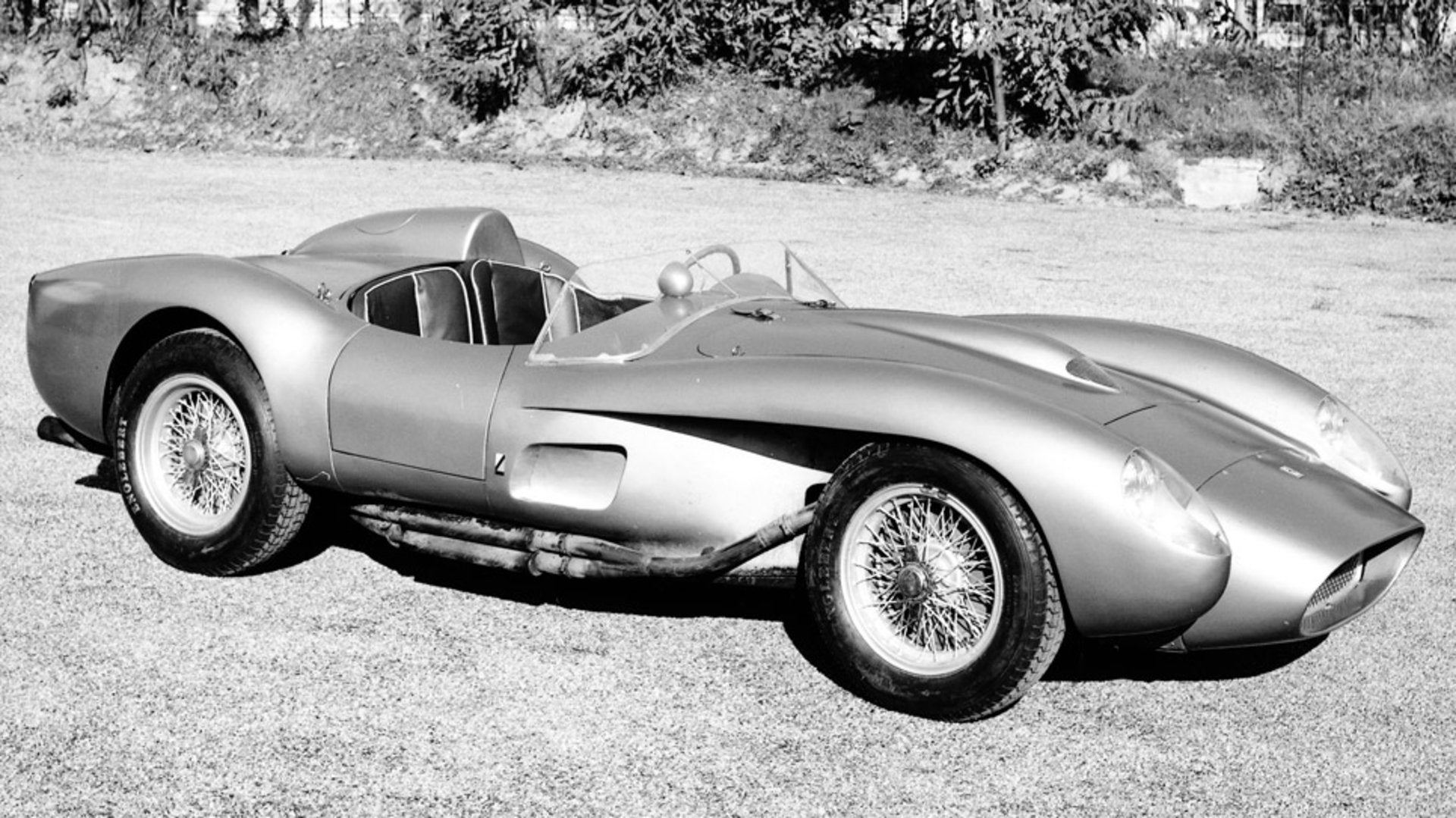
The 1957 Ferrari 250 Testa Rossa is one of the most famous Ferraris from the 1950's. It made its competitive debut at the infamous Nurburgring Nordschleife circuit in Germany, running at the 1957 Nurburgring 1000km race. 12 Boasting over 85 unique twists and turns, the Nordschleife circuit is the most challenging track in the world and, at 22.81km long, it is also the longest. While the new Ferrari did not win, it proved that it had the ability to keep up with the best cars on the circuit. For the first 15 laps of the race, driver Olindo Morolli was able to keep up with the race leaders. However, due to his poor knowledge of the circuit, he fell behind to end up finishing tenth. 13 In spite of this, Ferrari was encouraged by the result. The race was won by an Aston Martin powered by a 3.0L engine, beating out many other cars featuring larger 4.0L engines. This validated Ferrari's suspicion that the 3.0L engine was the way to go moving forward. 14 The 1957 Testa Rossa was also an early example of aerodynamics dominating the styling of the body. It featured a Scaglietti body that seemed to be aimed at cooling the gigantic front brake drums. This meant that the body, in effect, only had an upper aerodynamic surface. 15 This body would become one of the most beautiful cars ever made, and one of the most expensive cars ever sold at auction.
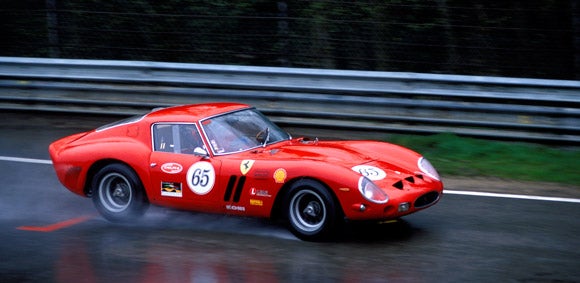
In 1962 the Federation Internationale de l'Automobile (FIA) required that for a car to be eligible to race, at least 100 copies must be made in order for it to be homologated for Group 3 Touring Car Racing. Despite this rule, Ferrari built only 39 of these cars. 16 In order to get around the rule that required 100 cars to be built, they skipped chassis numbers to fool the FIA officials into thinking that more cars had been produced than actually had been. This car turned out to be one of the most legendary Ferraris of all time: the 1962 Ferrari 250 GTO, based on the outgoing Ferrari 250 GT. In its initial run prior to the 1961 Italian Grand Prix, the 250 GTO earned the nickname "Il Mostro" (The Monster) because of its rough-around-the-edges prototype body. 17 Since each individual body was hand formed the bodies were often not symmetrical and in some cases the doors were even set at different heights. In its initial testing sessions, legendary driver Stirling Moss drove it to record times, far better than those set by the previous generation 250 GT. 18 The 250 GTO was powered by a 3.0L V12 mated to a new 5-speed, synchromesh transmission. The overall shape was designed and built by Scaglietti, an Italian design firm. 19 The cars were put into a wind tunnel to tune the aerodynamic characteristics of the car. This car would be wildly successful in racing, winning Ferrari the constructor's championship in 1962, 1963, and 1964. 20 It also had the distinction of being one of the last competitive front-engined cars, as more and more manufacturers were building cars with the engine mounted in the middle of the car for more favorable weight distribution. The Ferrari 250 GTO is also the most expensive car ever sold, with one example selling for $52 million in 2013. 21
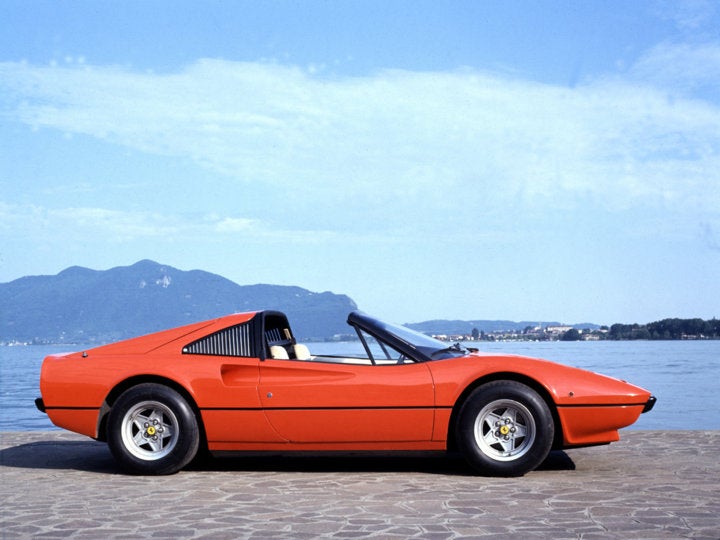
The 1977 Ferrari 308 GTS is one of the most famous Ferrari's of the 1970'2 and 80's, due in large part to being featured on the tv show Magnum PI starring Tom Selleck. 22 Structurally and aesthetically the 308 GTS is very similar to the 308 GTB, the primary difference being the 308 GTS's targa top. 23 The 308 GTS is a mid-engined sportscar with power transmitted through a 5-speed manual transmission to the rear wheels. The 308 GTS was packaged in such a way that there were 2 trunks, a deep "frunk" at the front of the car and a small trunk behind the engine in the rear. The trunk could be used to store the roof for open air motoring. 24 Compared to earlier Ferrari models that featured curves and flowing lines, the 308 GTS was very straight and angular in design. This is a design style seen on many of Ferrari's cars through the 1970's and 80's. As the century progressed, Ferrari's would become a little softer around the edges.
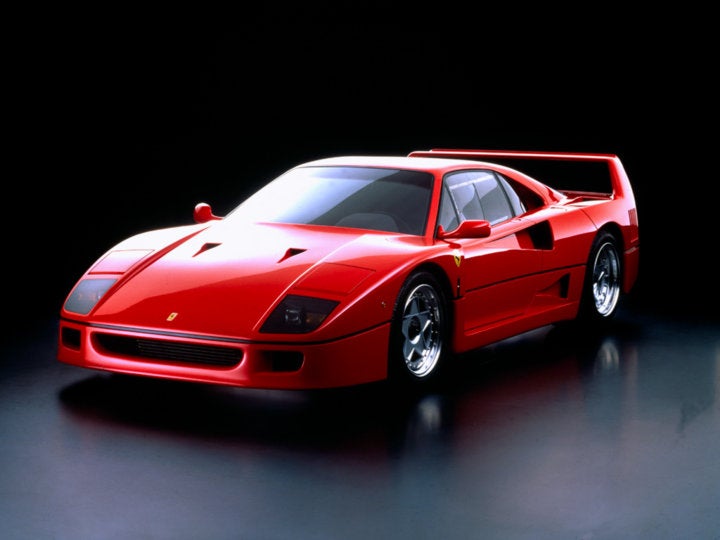
The last Ferrari Enzo saw designed and built before his death was the 1987 Ferrari F40. 25 The F40 was designed to celebrate the 40th anniversary of Ferrari and at the time it was the fastest, most powerful, and most expensive Ferrari sold. In 1984 Ferrari had begun development of a successor to the 288 GTO to be used to compete against Porsche in FIA Group B. However, in 1986 the FIA ended the Group B category, leaving Ferrari with several developmental prototypes and no place to enter them for competition. 26 These cars would be put to use as prototypes for Enzo's final supercar. The F40 is powered by a 2.9L V8 producing 471 horsepower which propelled it to speeds in excess of 200mph. 27 The body was unique not only for its styling but also for its construction. It is one of the first cars to utilize a composite body, made up of carbon fiber, kevlar, and aluminum. 28 Similarly to previous cars, when it came to the styling form followed function. The body of the F40 was designed to reduce drag by reducing the frontal area of the car as well as fitting underbody panels that helped direct the air flowing under the car. 29 This resulted in a streamlined body shape with very few stylistic enhancements. Ferrari lifted elements of their Formula One cars for use on the F40 including the underbody panels and various ducts that were placed on the car for cooling purposes. The launch of the F40 in 1986 was the last launch that Enzo would attend. 30 Following his death in 1988, Ferrari would finish 1-2-3 in the Italian Grand Prix. 31
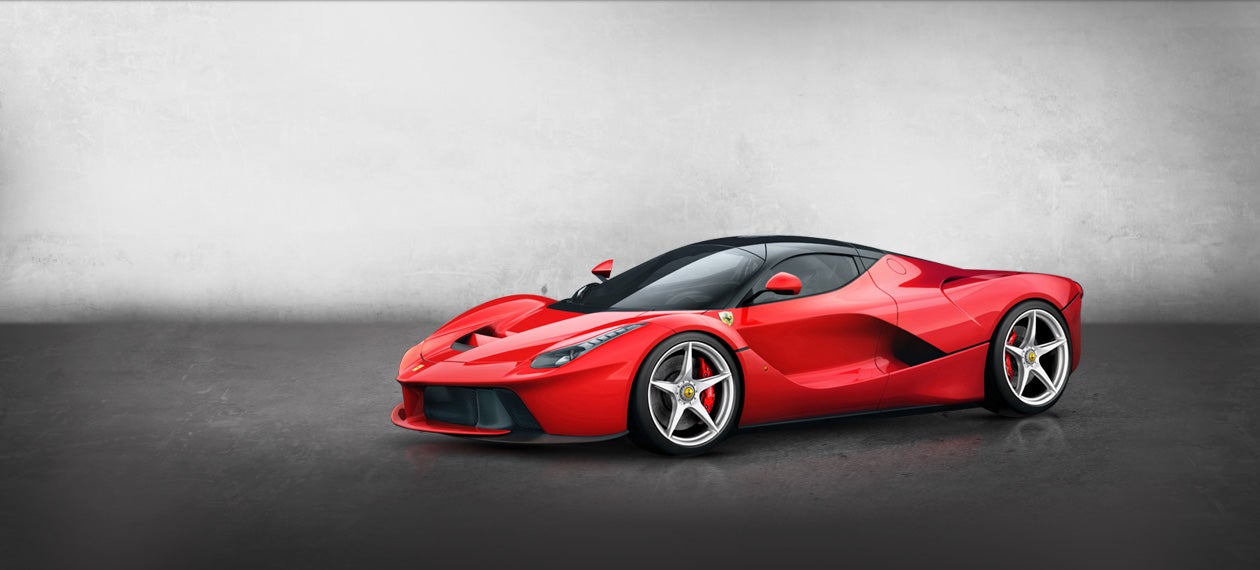
The most recent car Ferrari has released is the Ferrari LaFerrari. Built to be a successor to the 2004 Enzo Ferrari, the LaFerrari is very heavily influenced by Ferrari's Formula One efforts. It is powered by a 6.3L V12 producing 789 horsepower and is connected to a 161 horsepower Kinetic Energy Recovery System (KERS) for a total output of 950 horsepower, making it the most powerful Ferrari ever made. 32 The KERS system is an adaptation of the system currently in use by Ferrari's Formula One team. Perhaps its most striking feature, however, is its styling. The LaFerrari was primarily designed in a wind tunnel to maximize the aerodynamic efficiency of the body shape. It utilizes active aerodynamics- a system that actively controls the amount of downforce produced by the car- as well as an underbody diffuser. 33 , 34 This helped the LaFerrari become the fastest road legal car Ferrari has ever produced. It also has the distinction of being the first ferrari since the 1973 Dino 308 GT4 to have no design input from Pininfarina, further emphasizing the influence aerodynamics had on the design. 35
Style
Ferrari's are the poster child for Italian automotive design due to the rich and illustrious history of the brand. While a Ferrari from the 1950's and a Ferrari rolling off the production line in Modena today look radically different, under the skin they are quite similar. Since Ferrari started off as a racing team, the racing spirit has been a part of the DNA of every Ferrari. There are several ways Ferrari has shaped their image as THE Italian automotive brand including the development of their engines that produce a distinctive high-pitched tone, their racing success, and the manufacturing of their cars.
Ferrari has used the same basic engine family since its inception and that brand continuity has helped the sound of Ferrari's engines to be instantly recognizable. Ferrari's first V12 was nicknamed the "Colombo" after the engineer that designed it, Gioacchino Colombo. He was brought to Ferrari from Alfa Romeo where he designed V12 and V16 engines for Alfa Corsa. 36 The Colombo V12 was oversquare, meaning the bore was larger than the stroke which resulted in higher engine speeds and contributed to the high-pitched wail of the Ferrari's. This also meant that the overall height of the engine was reduced, allowing Ferrari to have a lower center of gravity in their cars. This is very important for racing, where a low center of gravity can enable a driver to take corners at higher speeds, resulting in a faster overall lap time. The Colombo V12 would continue to evolve until the present day, where a derivation is currently in use in the Ferrari LaFerrari.
Ferrari is also known for its V8 engines. The Ferrari V8 engine family is also known as the Dino, named after Enzo Ferrari's son that died as a result of muscular dystrophy. 37 It features a 90 degree Vee configuration and has displaced anywhere from 2.9L-4.3L. These engines are primarily used in Ferrari's mid-engined sports cars, most recently the F430 and 458 Italia. Similarly to the V12, they produce a very distinguishable wail, a trademark of Ferraris for many years. They utilized a flat plane crank configuration which also helps to produce its unique sound.
The factory in Maranello, Italy is a tribute to the quality and passion that goes into every car Ferrari makes. Nearly every component, from the engine block and valve stems, to the custom upholstered seats, to the hand welded chassis are made in Maranello. 38 The assembly halls feature bright, natural light and green-spaces on the factory floor to regulate heat and humidity. 39 Every Ferrari is hand built by master technicians who spend years performing their craft. Italian products are known for their craftsmanship and quality and Ferrari is no different. While a large automaker such as GM can make a car every 2 seconds, Ferrari averages a car every hour. This is because Ferrari builds every car by hand meaning there are less than 10 manufacturing robots in the whole factory. 40
Marketing
Ferrari has a marketing budget of $0.00. They don't take out ads in the paper or make flashy tv commercials. Despite this, Ferrari has never had trouble selling any of their cars. Part of this is due to the exclusivity of the brand. In 2013, Ferrari produced 7,318 cars. 41 In comparison, GM during that same time period sold 2,786,078 cars- almost 381 times as many. 42 In order to buy several of Ferrari's models you had to be invited to buy one. 43 This included cars such as the Ferrari Enzo and Ferrari LaFerrari. By doing this, Ferrari is able to control who gets their cars and, in turn, is able to control their brand perception through the people who they let buy their cars.
In conclusion, Ferrari has stayed true to their roots, by both being wildly successful as a racing team and by building some of the most desirable cars on the planet. The aerodynamic influences on the design, while fully functional and beneficial to the overall performance, are also aesthetically pleasing. The craftsmanship and quality of Ferrari's are what set them apart from the rest of the world and give them a uniquely Italian aura.
 PushToStart
> dontbethatguy
PushToStart
> dontbethatguy
01/08/2015 at 15:05 |
|
Haven't finished reading yet, but here's a small correction:
The roof panel for the 308 GTS doesn't store in the "trunk" (which is essentially just a small zipper compartment) or the frunk (the spare is in there), it actually stows in the small space behind the seats.
 dontbethatguy
> PushToStart
dontbethatguy
> PushToStart
01/08/2015 at 15:42 |
|
That is something i did not know. I only included that car because the professor is a film professor and i figured he'd appreciate the nod to cinema/tv in my paper.